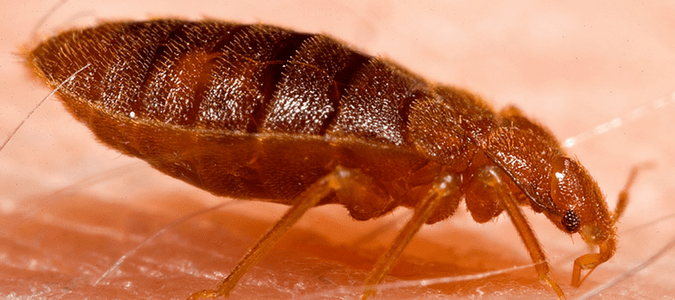
Bed bugs are on the rise across the country. Although these tiny, reddish-brown parasites have always been a common pest, experts believe that the increased ease of air travel and the outlawing of strong insecticides have allowed their numbers to surge again. Where do bed bugs come from, and what attracts them? Knowing the answers to these questions can help you get these pests out of your home – for good.
Where do bed bugs come from?
Bed bugs were once thought to have medicinal properties and were initially documented in the first century. Once confined to the tropics, these parasites moved with humans, so they can now be found across the globe. The spread of bed bugs is also linked to the fact that the animals are resilient since they can survive for long periods without food. Bed bugs are prolific, and the animals can mate with close relatives – even their mother!
Bed bugs were more widespread in the United States before World War II. The population then dwindled after the introduction of pesticides such as DDT. After these pesticides were restricted, the number of bed bugs increased, and pest control companies needed to develop effective, alternative treatments to eliminate the pests.

Where do bed bugs live?
Bedbugs got their name because they are commonly found in and around areas where humans sleep. So, you might find these pests on your mattress, in the area where your box spring and mattress meet, and hidden in your bed skirt.
Bed bugs don’t choose beds because of what they are made of. Instead, they are attracted to the carbon dioxide we exhale and our body’s warmth. Since there are more significant concentrations of people in apartments, hotels, trains, buses, and shelters, bed bugs can be more prevalent in these areas than in single-family homes.
If you think cleaning the sheets will resolve your bed bug problem, think again. Bed bugs aren’t attracted to dirt, although clutter may give these pests more hiding places. Getting a plastic cover for your mattress won’t necessarily help, either, since these creatures are pros at finding other places to hide.
A recent study suggested that bed bugs could be attracted to the color of your sheets, but there’s not enough evidence to switch out your linens just yet. Bed bugs were found to prefer black and red, but scientists theorized that black was more closely tied to dark places where the pests are safe and hidden away and that red is associated with the color of blood, their primary food source, and the presence of other bed bugs. Now we know that it’s not just humans who believe in safety in numbers!
Bed bugs can be found in other parts of your home, even if they prefer your sleeping quarters. The parasites can be found in cracks in the walls, curtains, and ceiling holes, in addition to finding their way onto other pieces of furniture. Most active at night, these creatures can travel as much as 20 feet from their hiding place (and back) to find food.
Although bed bugs can live in most places humans inhabit, they cannot survive through several days of freezing temperatures. Unfortunately, that means that bed bugs can live virtually year-round in cities in warmer climates like Orlando.
How can you tell if bed bugs have infested your home?
Although bed bugs are tiny – about the size of Lincoln’s head on a penny – there are other signs that these wily insects may be in your home if you don’t find the animals themselves in and around your mattresses, blankets, pillows, and sheets. These warning signs include:
- Although you may only notice a sweet, musty odor when your home is infested, the animals use smells to communicate.
- Rust-colored spots may appear on furniture as bed bugs leave waste material behind.
- Exoskeletons appear after the insects molt.
- Eggs or skin casts can also be left behind.
What steps can I take to prevent bed bugs from entering my home?
If you are sure you don’t have bed bugs in your home now, you want to prevent them from arriving in the future. If you stay at a hotel, check your bed before sleeping. When you return, wash everything in hot water since bed bugs can’t survive in temperatures above 113 degrees. Closely inspect your luggage, purses, and coats for signs of the tiny creatures.
Avoid purchasing used furniture or linens; if you do, thoroughly inspect the items before bringing them into your home. Be vigilant when returning from places where bed bugs might thrive, such as a movie theater, office, or hospital, or when traveling on mass transit to ensure bed bugs aren’t hitching a ride on you into your home.
How can I treat bed bugs?
Unfortunately, killing a bed bug or two won’t solve your problem. Female bed bugs lay eggs continuously as long as they can access food. In a lifetime, a well-fed female can lay up to 500 eggs.
In addition, bed bugs can survive a year without eating, so they may still survive in your home, even if you haven’t seen signs of them for a while. Orlando exterminators consider bed bugs the most challenging insect for homeowners to eliminate on their own. Often, a thorough initial treatment is followed up by one or more check-ups to make sure these pests are gone – for good.